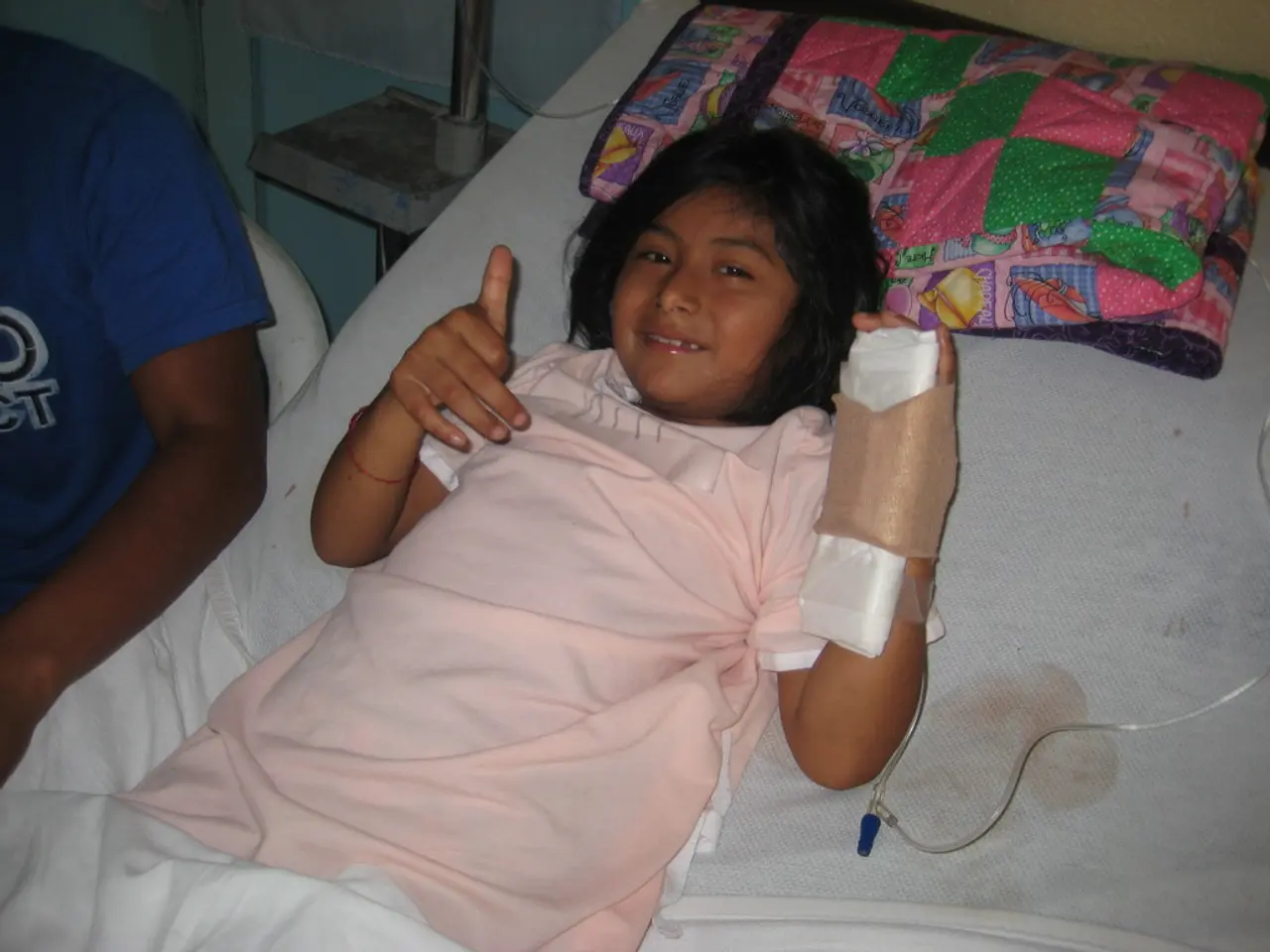Fly Bites: Appearance, Varieties, Signs, and Remedies
In the summer months, biting flies can become a nuisance for many people across the United States. These pesky insects, while not all harmful, can cause discomfort and in some cases, transmit diseases. Here's a guide to help you identify the six major types of biting flies in the US, their symptoms, and how to prevent bites.
1. Horse Flies (Family Tabanidae)
Characteristics: Horse flies are large, agile flies that are often active in sunlight and inactive at night. Females have strong mouthparts with sharp cutting blades to puncture skin and lap up blood. They feed on nectar but females require blood for egg production.
Symptoms of bites: Horse fly bites can be painful, causing sharp puncture wounds and irritation. Female horse flies can also transmit diseases such as equine infectious anemia, anthrax, tularemia, and certain parasites in animals.
2. Deer Flies (Family Tabanidae)
Characteristics: Deer flies are similar to horse flies but generally smaller. They are active in sunlight and females bite to get blood.
Symptoms of bites: Deer fly bites can cause painful irritation and swelling, similar to horse flies. Like horse flies, they can transmit some blood-borne pathogens to animals.
3. Black Flies
Characteristics: Black flies are small, hump-backed, dark-colored flies that are active mostly near rivers and streams.
Symptoms of bites: Black fly bites can be painful and cause swelling and itching, but they do not transmit diseases in the US.
4. Stable Flies
Characteristics: Stable flies resemble house flies but have painful bites. They are common around livestock and pets and bite mostly on ankles.
Symptoms of bites: Stable fly bites can cause sharp stabbing pain on ankles, mild irritation, and rare allergic reactions. They tend to bite in early morning or late afternoon during spring/early summer.
5. Chiggers (Family Trombiculidae)
Characteristics: Chiggers are actually mites, very small (about 1/60 inch), orange in color. Their larvae attach to skin, often in low vegetation areas like grasslands, woodlands, parks.
Symptoms of bites: Chigger bites cause intense itching and dermatitis due to the larvae embedding their mouthparts in the skin. This results in wheals and red bumps.
6. Botflies (Family Oestridae)
Characteristics: Botflies are related to horse flies and sometimes grouped as gadflies. They are known for larvae that develop inside host tissues.
Symptoms of bites: The adult bite is less common; usually irritation and skin lesions arise from larval infestation under the skin.
Prevention --------------------
To prevent fly bites, avoid spending time in areas where biting flies are common, keep the yard neat and well-trimmed, wear long sleeves, pants, and a hat, use insect repellants, wear protective netting on hats, avoid the outdoors during times when flies tend to bite, and cover skin with light-colored clothing.
When to Seek Medical Attention ----------------------------------
Most fly bites can be treated at home with cleaning, ice, and anti-itch meds. However, immediate care is needed if severe allergic reactions occur such as difficulty breathing, swelling of face or throat, or widespread rash.
This overview should help you identify the common biting flies in the US, their biting behavior, and what to expect symptom-wise from their bites. Remember that not all flies bite, but those that do can be an irritation and danger to some people. Stay informed and stay safe this summer!
- The type of disease equine infectious anemia can be transmitted by horse flies, a category of fly known for their large size and sharp cutting blades.
- Deer flies, which are smaller in comparison to horse flies, can lead to degeneration in symptoms such as painful, irritating bites and potential transmission of blood-borne pathogens to animals.
- Obesity in the form of inflammation and itching may be caused by black flies, small flies active mostly near rivers and streams that do not transmit diseases in the US.
- Stable flies, resembling house flies but with painful bites, can cause depression in symptoms such as sharp stabbing pain on ankles, mild irritation, and rare allergic reactions.
- Chiggers, a type of mite, can bring about skin-care issues like intense itching and dermatitis due to their larvae embedding their mouthparts in the skin.
- While adult botflies cause less common bites, their larval infestation under the skin can cause Alzheimers-like symptoms such as irritation and skin lesions.
- Science has developed predictive models to identify copd, a type of disease that can be triggered by prolonged inhalation of airborne substances from certain flies.
- The bipolar disorder, a mental-health concern, may be aggravated by the stress of migraines, symptoms of which can be exacerbated by bites from deer flies or horse flies.
- Therapies-and-treatments for mental-health conditions like depression could potentially be modified based on the findings of studies on the impact of dry skin caused by chigger bites.
- While the focus is usually on protecting yourself from biting flies, maintaining a healthy and well-balanced health-and-wellness routine can also help prevent obesity and other diseases, making you less prone to fly bites in the first place.




